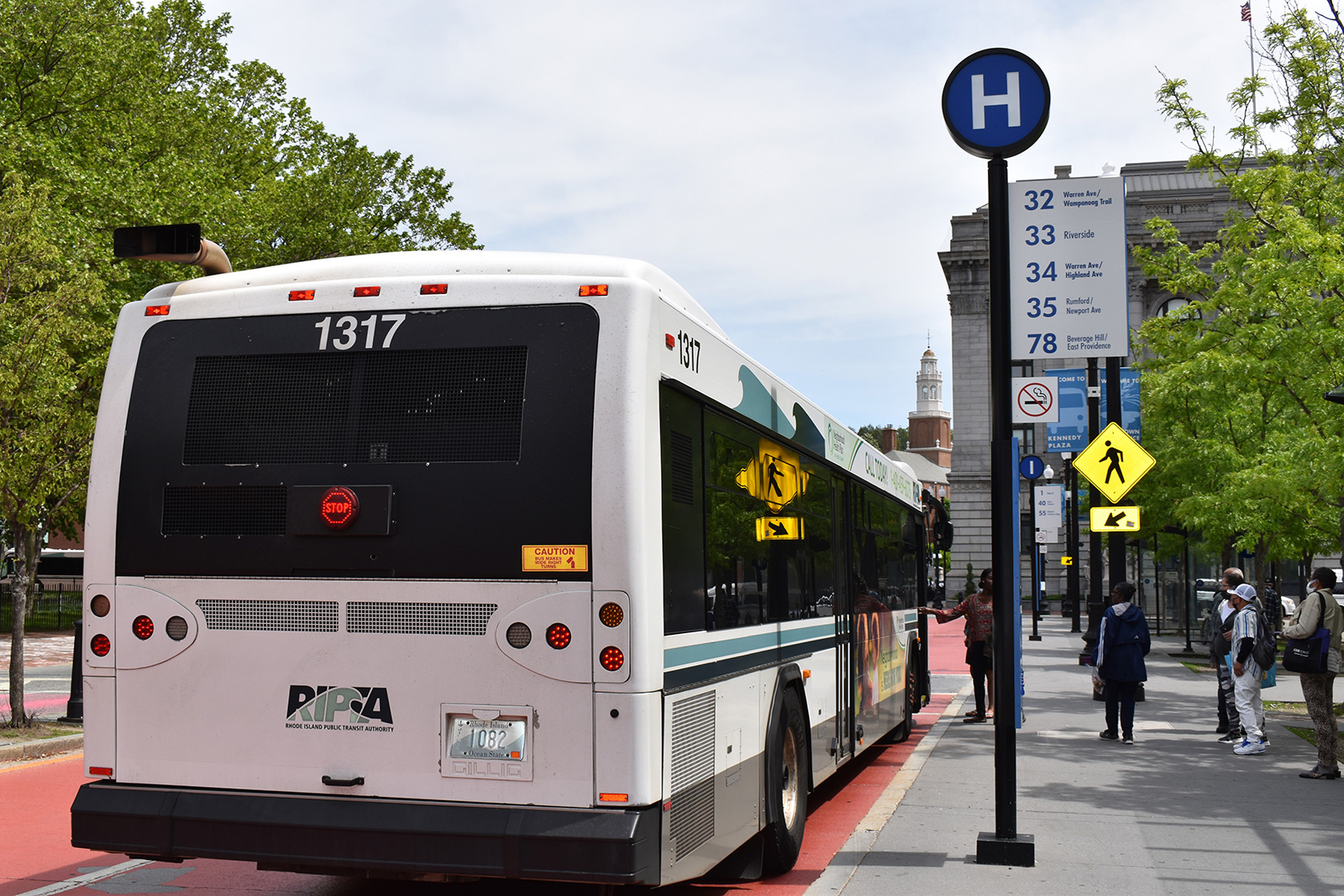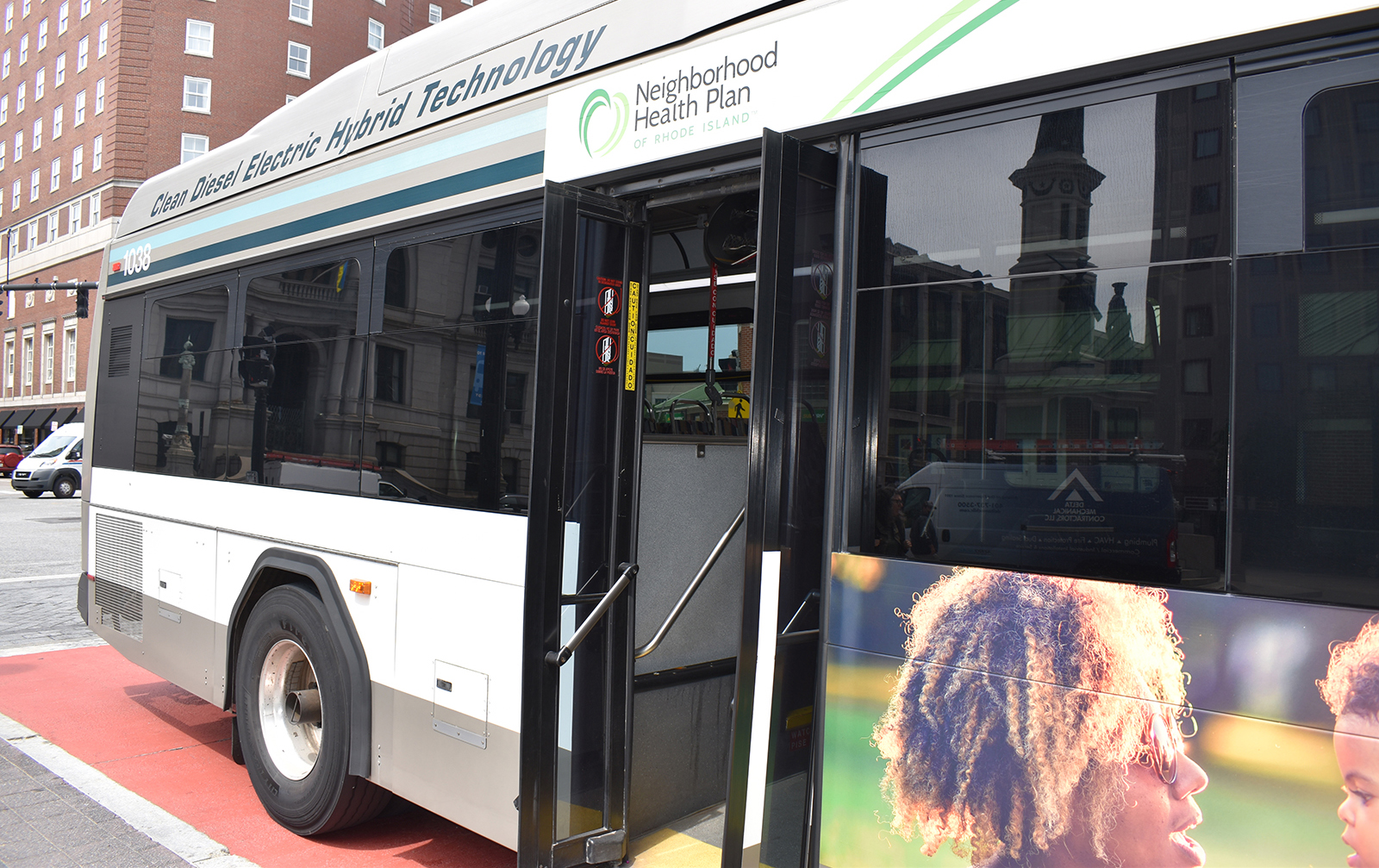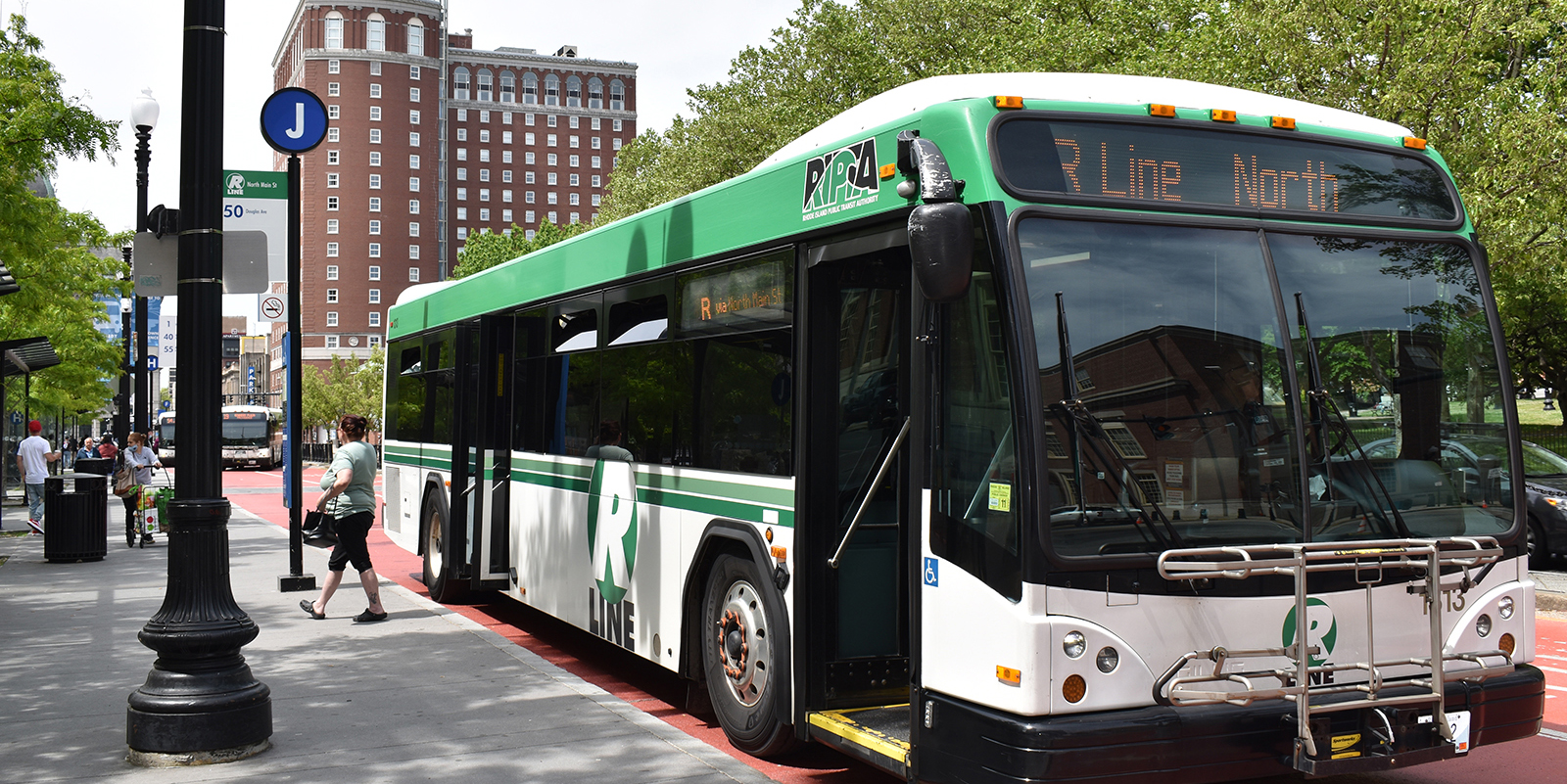Facelift Planned for Aquidneck Island’s East Main Road, But Will It Go On a Diet, Too?
March 31, 2024
MIDDLETOWN, R.I. — Potholes pock East Main Road, one of the busiest thoroughfares on Aquidneck Island.
Cars routinely travel the four-lane road faster than posted speed limits of 25 or 35 mph, and stop abruptly in the left lanes to move in front of oncoming traffic to turn into streets and businesses on the other side of the road.
The Rhode Island Department of Transportation is expected to resurface the road starting in Middletown later this year, and while the road gets a facelift, it could also undergo a diet — a road diet.
A road diet usually converts a four-lane road, as East Main Road is, into three lanes: two lanes for travel in either direction, with a turning lane installed in the middle that either travel lane can use to get across.
RIDOT is not recommending the road diet, according to spokesperson Charles St. Martin, and instead is leaving the choice up to Middletown.
In a memo recently sent to the town’s administrator by RIDOT and shared with ecoRI News by St. Martin, the agency outlines the pros and cons of changing the road’s configuration.
Pedestrians and bicyclists would likely feel safer on the road, with more room in the shoulders and fewer lanes to cross to get from one side to the other. It could also reduce accidents that happen when cars stop in the left lane and try to make a turn across the road.
Moving down to two travel lanes, one for each direction of traffic, may also cause delays, more summer traffic, and shift traffic to West Main Road across town, according to the memo based on RIDOT’s analysis.
Bari Freeman, founder and executive director of Bike Newport, said the safety increases on the road make it a necessary modification.
“That’s what we’re addressing here, reducing the frequency of crashes and making it a safer and better experience on the road for everyone,” she said.
A 2020 road safety assessment showed there are about 200 crashes on the state road annually, something Freeman said and studies show a road diet could help rectify.
She also said Bike Newport is doing its own analysis of the traffic modeling on the road with data provided to them by RIDOT, to see whether the travel delays estimated by the department accounted for the constant stop-and-go in the left travel lanes when cars make turns.
If those models did not consider the obstructions in the left lane, Freeman said the between 2- and 10-minute delays that RIDOT said a road diet might cause may be shorter or non-existent.
(The Federal Highway Administration notes that speeds become more consistent after the implementation of a road diet and suggests they can be used as a traffic-calming measure.)
“If there is a change in the arrival times or the travel times, it is probably going to be insignificant compared to the very highest significance of reducing, if not eliminating, the crashes that are taking place,” Freeman said.
Bike Newport’s analysis should be available soon so that it can be provided to the Middletown Town Council, she said.
The Town Council is expected to consider the diet at the board’s April 1 meeting and decide what to do before April 19 and the resurfacing of the road is set to begin.
“What the council will do is explore options related to enhanced safety measures and any additional impacts it might have across the other roadways in Middletown,” council member Chris Logan told ecoRI News in an email. “We cannot simply assume anything here based upon feelings; we need to engage engineering, traffic and safety professionals who will provide fact-based analysis so we can do our diligence before any decision is made.”
Logan promised the council would consider all “stakeholder input.”
Fellow council member Dennis Turano said he is open to the idea of trying the road diet. He is concerned about traffic and the impact on businesses in the area and emergency services, but said a trial period would show the community more concretely than models and data whether it works.
“You won’t know unless you do it,” said Turano, noting that it requires painting lines on the road and can be reversed if it doesn’t pan out.
Whether the road diet is the answer, he said some action has to be taken.
“Something has to happen with that road, it’s very dangerous,” Turano said.




They tried to switch 138 to 1 lane in the past ,it did not work out !
I live in Middletown and I travel East Main Road frequently. I’m not sure a diet road will help. The road is narrow and it would be better if it could be widened but unfortunately it cannot because of houses being very close to the road. I believe speed is the problem and that the road needs to be patrolled by the police more often. Making it a diet road will definitely push traffic to West Main Road and add to the frustration of the drivers who can’t possibly drive the speed limits because those limits don’t apply to them only others. Also if trucks could somehow be forced to drive in the right lane to their destinations and not in the left lane that would help.
Rt 2 in Exeter was converted to one lane with a middle lane for turns
Once drivers adjusted to the change the road is now safer. Travel times are about the same . Middletown make the change
Your residents will appreciate the safer roadway
Route 44 in parts of northwest RI had a contentious debate on the same issue. Generally those that wanted to speed and pass slower traffic at any time were against the diet, safety people for it. Where it has been implemented we have gotten used to it and there seems little remaining controversy. It helps there are a few stretched where there is a passing lane in one direction. In Middletown there might be more reasons for the diet because there are more reasons to turn left, and compared to Rt 44 there may be more walkers, bus users, and bicyclists who deserve safer roads even if some motorists have slightly longer trips
Doing this for the sake of bikes is a weird ruse. Taking the danger down of biking on East Main Rd from a 10/10 to a 9/10 dodges the actual need for a separation of bikes and cars. This serves neither drivers or bicyclists.
Also, these things never go back once they are implemented.
Good luck to the businesses over there, the existing report shows significant delays.